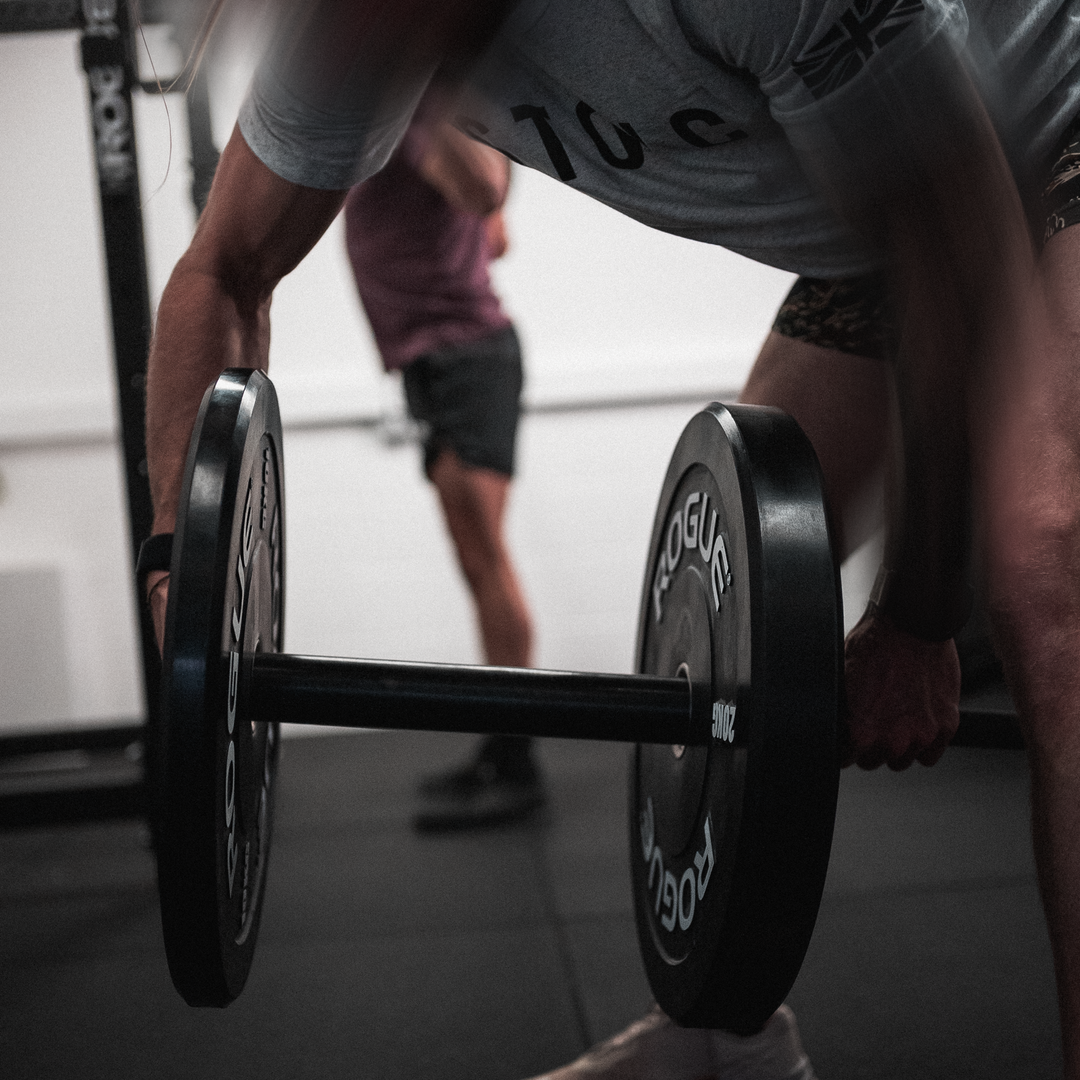THE BENEFITS OF USING TEMPO IN TRAINING

Resistance training is the most effective way to build strength and lean muscle mass. But just saying that is like saying ‘saving money is the best way to get richer’.
Neither is wrong at all, but the process of both is always laced with nuances.
The importance of using tempo and manipulating time under tension in their resistance training sessions is overlooked by many.
Tempo refers to the speed at which each repetition is performed, and it can have a significant positive impact on your strength and size as well as being a useful tool to overload movements in specific ranges of motion.
In this article, we will go through what tempo is and the benefits of using it in resistance training.
Understanding Tempo In Resistance Training.
We always write our tempo prescription for each rep as a four-digit number, such as @4010, @3112 or @20X0.
Each digit represents a different phase of the repetition and is always written in the order of:
Eccentric: This is the lowering phase of the movement, where the muscle is lengthening under tension.
Isometric: This is the pause at the bottom of the movement, where the muscle is held in a static position under tension.
Concentric: This is the lifting phase of the movement, where the muscle is shortening under tension. If an ‘X’ is used here then it denotes the phase should be executed as explosively as you can without losing your form.
Isometric: This is the pause at the top of the movement, where the muscle is held in a static position under tension.
By manipulating the tempo of each rep, we can dictate the overall time under tension of the set which can result in greater muscle stress and damage and ultimately lead to greater muscle growth.
Benefits of Using Tempo in Your Resistance Training
According to exercise physiologist Brad Schoenfeld, there are three primary mechanisms of muscle growth: Muscle tension, metabolic stress and muscle damage.
Oftentimes all of these factors are correlated with the amount of weight you lift but this is incorrect. So when looking to increase muscle mass, it is more about ‘how’ you lift the weights as opposed to simply ‘how much’ you lift.
By using tempo to control your reps more intentionally you can create more muscular tension, more metabolic stress (that uncomfortable burn/pump feeling) and more muscular damage.
Further benefits of using tempo:
- Improve your mind-muscle connection: By slowing down the movement and focusing on the contraction of the muscle rather than just moving the weight, you can improve your mind-muscle connection. This can help you to better recruit the targeted muscle fibres and have more interoceptive awareness of your own body.
- Increased overall time under tension: By increasing the TUT for each rep, you can also increase the metabolic stress placed on the muscle. Helping increase muscle gain as well as fat loss.
- Increased muscular damage: Specifically slowing down the eccentric phase of each rep can increase the amount of muscle damage that occurs.
- Overloading specific parts of a movement: By adding pauses during a part of a movement you struggle with you can improve your strength specifically in that range. For example, at the top of a Pull Up, getting your chest to the bar, or pushing off the floor in a Press Up position where your triceps may give out.
- Reduce The Risk of Injury: By controlling movements, especially when starting out in your resistance training journey or coming back from injury, you can reduce the risk of injury and groove the pattern more efficiently.
How To Apply Tempo In Your Sessions
The use of tempo specifically in training in the lead-up to military courses can help to improve your strength, endurance, and overall physical robustness but also can help grease the groove of ‘to the beep’ type assessments.
Below are some examples of how tempo can be incorporated into training for certain movements that require a specific way of performing them:
| Exercise | Tempo | Reps |
|---|---|---|
| Push-ups | 3111 | 10-12 |
| Pull-ups | 21X2 | 4-6 |
| Sit Ups | 2111 | 15-18 |
Incorporating tempo into these exercises rather than just pumping out reps as fast as you’re able to will help develop the muscular endurance you’re going to need to display to excel in your selection course.
Understanding how tempo affects tissue damage allows us to manage fatigue during our training cycles too. Slowing down eccentric loading can create more muscular damage which in turn leads to more DOMS (delayed onset of muscle soreness).
Whereas sessions that focus more on concentric loading with little to no eccentric loading (dragging or pushing a sled, farmers walk, plyometric movements etc) can limit this soreness.
We factor this into our training cycles to effectively manage your soreness and fatigue so that you can stay consistent in your training and not feel like you’re just being beaten into the floor and expected to recover.
Conclusion
Tempo is an often-overlooked aspect of resistance training, but it can have a significant impact on your results. By manipulating the tempo of your repetitions build greater strength and lean muscle mass as well as strengthen specific ranges of motion and reduce the risk of getting injured in sessions.
It is important to note that tempo should be used in conjunction with other variables such as load, volume, and frequency. It is not a magic solution for building muscle and strength, but rather a tool that can be used to optimise your training.
Those who are new to resistance training or who have limited mobility and want to utilise strength training to improve it may benefit even more from incorporating tempo into their training and working through incrementally increasing ranges.
References
Schoenfeld, B. J. (2010). The mechanisms of muscle hypertrophy and their application to resistance training. Journal of Strength and Conditioning Research.




